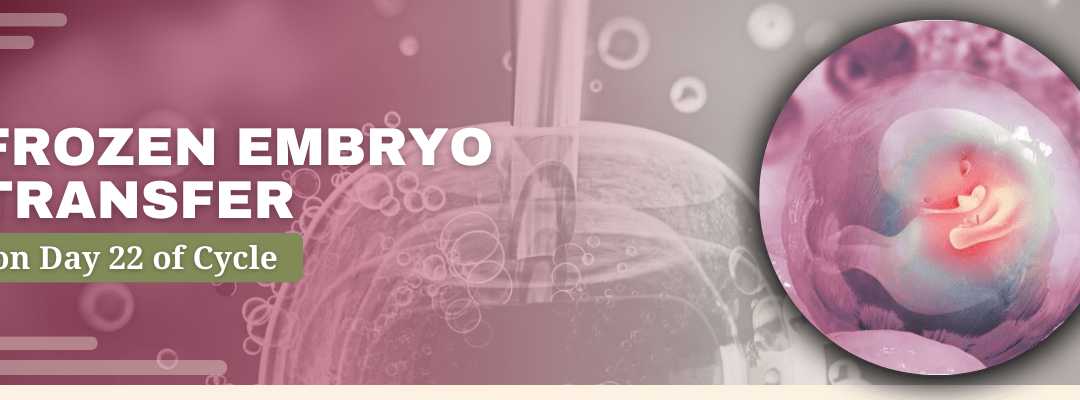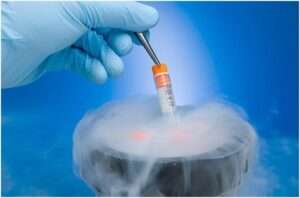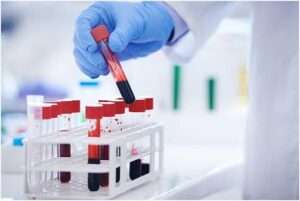Experiencing infertility is emotionally challenging for couples. The good news is there’s hope with Frozen Embryo Transfer (FET). FET treatment in Mumbai is gaining recognition for its advanced techniques and high success rates. Through FET it is possible to preserve the embryos and use them at a later date.
Understanding the menstrual cycle and its phases is fundamental for anyone looking into FET. Properly timed procedures, like the frozen embryo transfer on day 22 of cycle, can significantly impact the results. Always consult with experts, such as Dr. Mohit Saraogi, a renowned infertility specialist in Mumbai, associated with the Best IVF Centre in Mumbai, to ensure the most favorable outcomes.
Now, let’s dive deeper into how FET can make a difference in your journey. Interested? Let’s explore further with expert guidance.
Understanding the Menstrual Cycle and FET Timing
The menstrual cycle refers to a monthly occurrence in which the female reproductive system undergoes relevant changes to increase the likelihood of pregnancy.
Let’s break it down into its main phases:
-
Menstrual Phase (Days 1-5):
Marked by bleeding as the uterine lining
-
Follicular Phase (Days 1-13):
Ovaries prepare to release an egg, with hormonal stimulation of ovarian
-
Ovulation Phase (Day 14):
A mature egg is released from the ovary, the prime time for conception.
-
Luteal Phase (Days 15-28):
After ovulation, the body produces progesterone to prepare the uterine lining for pregnancy.
For those considering IVF, understanding the FET cycle is crucial.
Let’s explore how frozen embryo transfer (FET) fits into this timeline.

Dr. Mohit Saraogi, a leading IVF specialist in Mumbai, emphasizes the importance of timing in FET. Syncing the embryo’s developmental stage with the uterine environment can boost success rates significantly.
So, what are the advantages of choosing FET on day 22 of the cycle?
Advantages of Frozen Embryo Transfer on Day 22 of Cycle
Opting for a day 22 frozen embryo transfer offers several benefits:
- Optimal Uterine Environment: The timing aligns with a naturally receptive uterine environment, enhancing the chances of successful implantation.
- Flexibility: Embryos can be stored until ideal conditions for transfer emerge, reducing the stress of coordinating a woman’s cycle with embryo preparation.
Dr. Mohit Saraogi, a renowned IVF expert, says, “This minimizes the need for hormones, ensuring a less invasive process. A well-timed day 22 transfer harmonizes embryo and uterine lining.”
Day 22 FET: Precision and Comfort, recommended by top IVF experts! Ready to learn about success factors? Let’s dive in.
Dr. Mohit Saraogi, often recognized as the best IVF doctor in Mumbai, states, “This approach reduces the need for hormone therapies, making the process less invasive for the patient. A well- timed transfer, like on day 22, can optimize the harmony between the embryo and the uterine lining.”
In essence, the day 22 frozen embryo transfer method emphasizes precision and patient comfort, highly recommended by top IVF doctors, including Dr. Saraogi. At Saraogi Hospital, Mumbai people can seek IVF treatment and its associated procedures such as IMSI, ICSI, cryopreservation of sperm, eggs and embryos, genetic diagnosis and other gynaecological treatments under the a team of IVF specialists led by Dr Mohit Saraogi.
Now, let’s explore the factors affecting the success rates of FET on day 22 of the cycle.
Factors Affecting Success Rates of FET on Day 22 of Cycle
Several factors influence the success of a frozen embryo transfer on day 22 of cycle:
- Embryo Quality: Healthy embryos have better chances of successful
- Uterine Lining Condition: A receptive, well-prepared uterine lining is crucial for embryo implantation.
- Patient’s Age: Success rates tend to be higher in younger patients, but FET offers hope to various age groups.
Techniques Used: Use of advanced techniques and efforts to ensure very little damage to the embryos, especially during freezing and thawing. The Saraogi Hospital is very careful in handling and preserving embryos.
The methods employed during the freezing and thawing processes can impact success rates. Saraogi Hospital, often known as the best IVF Centre in Mumbai, employs advanced techniques ensuring minimal damage to embryos during these procedures.
Let’s address potential challenges and risks associated with FET.
Potential Challenges and Risks
- Thawing Process: Not all embryos survive thawing, but improved techniques have reduced this risk.
- Ovarian Hyperstimulation Syndrome (OHSS): FET lowers the risk of OHSS but remains a concern in some
- Multiple Pregnancies: Transferring multiple embryos can lead to
- Ectopic Pregnancy: Though rare, there’s a slight risk of embryo attachment outside the uterus.
- IVF Charges: The financial burden of IVF treatments, including FET, can be substantial, especially in regions without insurance
IVF charges in Mumbai can range from ₹1 lakh to ₹2.5 lakhs or more.
Consult a trusted IVF specialist for a comprehensive discussion about these factors and risks. Saraogi Hospital, renowned as the best IVF hospital in Mumbai, offers detailed consultations to ensure patients are well-informed and comfortable with the procedure.
What should you expect after a frozen embryo transfer, and how can you prepare for the waiting period?
Discover what to expect and how to navigate the waiting period confidently! Learn more about post-transfer care and readiness.
It’s essential to have a comprehensive discussion about these factors and risks with a trusted IVF specialist. Saraogi Hospital, recognized as the best IVF hospital in Mumbai, offers detailed consultations to ensure patients are well-informed and comfortable with the procedure.
Post-Transfer Care and Waiting Period after FET
After a frozen embryo transfer, taking it easy and avoiding strenuous activities is vital. Mild cramping or spotting may occur, but severe symptoms warrant contacting the fertility clinic. Within approximately 10-14 days, a blood test is scheduled to check for pregnancy.
Maintaining a positive environment and reducing stress during this waiting period is beneficial. It’s also an opportunity to discuss IVF charges in Mumbai and plan for potential next steps.
Avoid strenuous activity after frozen embryo transfer.
- Take ample rest
- It is normal to experience cramping or spotting
- Contact your fertility specialist in case of severe symptoms
- After 10 -14 days of transfer, the fertility specialist recommends a blood test to confirm the pregnancy,
- Maintain a positive environment
- Take no or minimal stress during this waiting
- Make sure to discuss IVF fees in Mumbai and plan the potential next
While it is ideal to perform the embryo transfer on day 22 FET, it is possible to schedule the transfer for a later date.
Alternative FET Timing Options
While day 22 FET offers benefits, there are other options. It is possible to schedule the FET timing based on the patient’s cycle and fertility specialist’s recommendations. Some women may undergo transfers earlier or later, depending on uterine lining conditions.
It’s crucial to remember that each patient is unique, and discussions with fertility specialists help determine the optimal timing for individual needs.
Conclusion
Navigating fertility treatments can be overwhelming, with numerous options and timelines to consider. Understanding each procedure’s intricacies and its alignment with the body’s natural processes is vital.
Frozen Embryo Transfer on day 22 of cycle is a good decision as it improves the chances of a successful transfer. The intent is to harmonize the embryo with the most suitable uterine environment for its growth and a successful pregnancy. Dr Mohit Saraogi concedes that a day 22 FET can be a promising move for couples hoping to get pregnant through FET and IVF.

Frequently Asked Questions
How does FET on day 22 differ from a full IVF cycle?
FET on day 22 involves transferring a previously frozen embryo into the uterus, bypassing the initial stages of IVF. A full IVF cycle includes egg retrieval, fertilization, and often fresh embryo transfer.
What should I expect during the actual FET procedure on day 22?
The FET procedure on day 22 is typically quick and painless. A thawed embryo is placed in the uterus using a thin catheter. It’s an outpatient procedure, allowing you to return home shortly after.
All set to explore your fertility journey with FET on day 22? Consult with Dr. Mohit Saraogi, a leading top infertility specialist in Mumbai, for expert guidance and personalized care. Your path to parenthood begins here.




